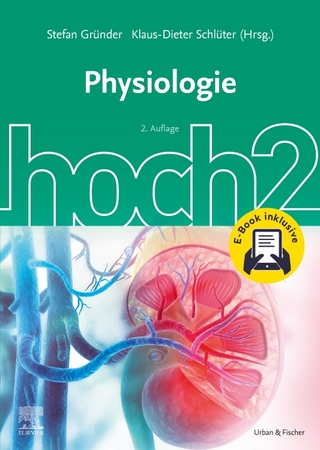
The Science and Physiology of Flexibility and Stretching
Routledge (Verlag)
978-1-032-72561-1 (ISBN)
- Noch nicht erschienen (ca. November 2024)
- Versandkostenfrei
- Auch auf Rechnung
- Artikel merken
The Science and Physiology of Flexibility and Stretching is the most up-to-date and comprehensive book to cover the underlying physiology and psychology of flexibility enhancing techniques, critically assessing why, when, and how we should stretch, as well as offering a highly illustrated, practical guide to stretching exercises. This fully revised new edition not only updates the present information but adds new chapters on areas that have attracted substantial interest in the last 5 years such as foam rolling, vibration, global effects of stretching, alternative methods to increase flexibility (e.g., resistance training) and others.
Richly illustrated, and including an online resource, The Science and Physiology of Flexibility and Stretching provides an important scientific inquiry into stretching as well as other flexibility enhancing techniques (e.g., foam rolling, vibration, resistance training, and others) and an invaluable reference for any strength and conditioning coach or student, personal trainer, sports coach, or exercise scientist.
David Behm is a University Research Professor at Memorial University of Newfoundland. He was a highly competitive athlete, excelling in baseball, ice hockey, and was drafted into the Canadian Football League (1979). His athletic background led him to seek out an academic career in the areas of applied neuromuscular physiology and sport/exercise science. Dr. Behm has won a number of university, national, and international awards based on his internationally recognized research contributions. At the time of publication, he has published over 20 book chapters, over 400 peer-reviewed scientific articles with over 35,000 citations. He consistently presents his research findings internationally and his work is often featured in popular fitness and health magazines and online publications.
Section I: The Science and Physiology of Stretching
1. My Personal Motivation for Stretching
2. History of Stretching
3. Types of Stretching and the Effects on Flexibility
Stretching-Induced Changes in Range of Motion (ROM)
Yoga
Range of Motion (ROM) Norms
Measuring Range of Motion (ROM)
Sex Differences
Ageing Differences
Youth Differences
Genetic Differences
Limb Dominance Differences
Circadian (Diurnal: time of day) Differences
Summary
4. Mechanisms Underlying Acute Changes in Range of Motion (ROM)
Thixotropic Effects
Neural Mechanisms of Acute Static Stretching
Neural Mechanisms of Acute Proprioceptive Neuromuscular Facilitation (PNF) Stretching
Neural Mechanisms of Acute Dynamic Stretching
Stretch Tolerance Sensory Theory
Acute Morphological Static Stretching Mechanisms
Skeletal Structures
Ligaments
Adiposity
Nerves
Muscle Hypertrophy
Intracellular and Extracellular Connective Tissue
Tendons
Fascicles
Acute Morphological Proprioceptive Neuromuscular Facilitation (PNF) Stretching Mechanisms
Acute Morphological Dynamic Stretching Mechanisms
Summary
5. Stretch Training-related Range of Motion (ROM) Changes and Mechanisms
Plastic Neural Adaptations
Plastic Morphological Adaptations
Psychological Adaptations
Summary
6. Global Effects of Stretching
Crossover or non-local muscle fatigue
Global Stretching Effects on Range of Motion (ROM)
Global Stretching Effects on Performance
Mechanisms Underlying Global Stretching Effects
Global Effects of Foam Rolling
Summary
7. Recommendations for Stretch prescription
Stretching Duration
Stretching Intensity
Optimal Time of Day to Stretch
Stretching Frequency (Days/week)
Pre- versus post-workout stretching
Stretching for Relaxation
Ventilatory Effects on Stretching
Combining Stretching with Muscular Contractions or Massage
Effect of Temperature on Stretching
Stretching under Metastable Conditions
Summary
8. Stretching Effects on Injury Reduction and Health
Physiological Rationale for Stretch-induced Injury Reduction
Dynamic Stretching and Activity Effects on Injury Incidence
Stretching Effects on Posture, Low Back Pain and Compensatory Overuse Syndromes
Effects of Immobilization on Flexibility
Stretching Effects on Dysmenorrhea
Stretching Effects on the Cardiovascular System
Summary
9. Does Stretching Affect Performance?
Static and PNF Stretching
Effects of Static Stretching on the Stretch-Shortening Cycle
Stretching Effects on Balance
Effects of Flexibility Training
Ageing Effects
Effect of Stretching Intensity
Cost Benefit Analysis
Effects of Dynamic Stretching on Performance
Effects of Combining Static and Dynamic Stretching on Performance
Effects of Ballistic Stretching on Performance
Full Warm-ups
Limitations of Acute Stretching Studies
Improving Performance by Limiting Muscle Soreness
Summary
10. Effect of Stretch Training on Functional Performance
Static Stretching
Dynamic Stretch Training
Summary
Chapter 11: Effects of Stretch Training on Muscle Strength and Hypertrophy
Author: Konstantin Warneke
What humans can learn from chicken and quails
Does stretching provide a sufficient stimulus to enhance human muscle strength and size?
Underlying mechanisms of stretch-mediated hypertrophy and strength increases
Practical applications and limitations
Section II: The Science and Physiology of Alternative Techniques for Increasing Range of Motion
12: Effects of Resistance Training on Range of Motion (ROM)
Author: Shahab Alizadeh
Moderating Variables
Possible Mechanisms
Summary
13. Acute and Chronic Effects of Foam Rolling Effects on Range of Motion (ROM)
and Performance
Author: Andreas Konrad
Fascial Restrictions and Myofascial Adhesions
Type of foam rollers
Acute foam rolling effects
Chronic foam rolling effects
Rolling Mechanisms
Other potential benefits or contradictors
Rolling Recommendations
Summary
14. Local Vibration Effects on Range of Motion (ROM) and Performance
Effects on Range of Motion (ROM)
Effects on Performance
Mechanisms
Summary
15. Instrument Assisted Soft Tissue Mobilization (IASTM)- no figure call outs
Acute Effects on Range of Motion (ROM)
Training Effects on Range of Motion (ROM)
Global effects of IASTM
IASTM Effects on Performance
Mechanisms
Summary
16. Flossing Effects on Range of Motion (ROM) and Performance
Floss Band Effects on ROM
Flossing Effects on Performance
Mechanisms
Flossing Effects on Pain
Summary
17. Stretching Exercise Illustrations
| Erscheint lt. Verlag | 30.11.2024 |
|---|---|
| Zusatzinfo | 8 Tables, black and white; 13 Line drawings, black and white; 114 Halftones, black and white; 127 Illustrations, black and white |
| Verlagsort | London |
| Sprache | englisch |
| Maße | 156 x 234 mm |
| Themenwelt | Sachbuch/Ratgeber ► Sport |
| Medizin / Pharmazie ► Allgemeines / Lexika | |
| Studium ► 1. Studienabschnitt (Vorklinik) ► Physiologie | |
| ISBN-10 | 1-032-72561-3 / 1032725613 |
| ISBN-13 | 978-1-032-72561-1 / 9781032725611 |
| Zustand | Neuware |
| Haben Sie eine Frage zum Produkt? |
aus dem Bereich


